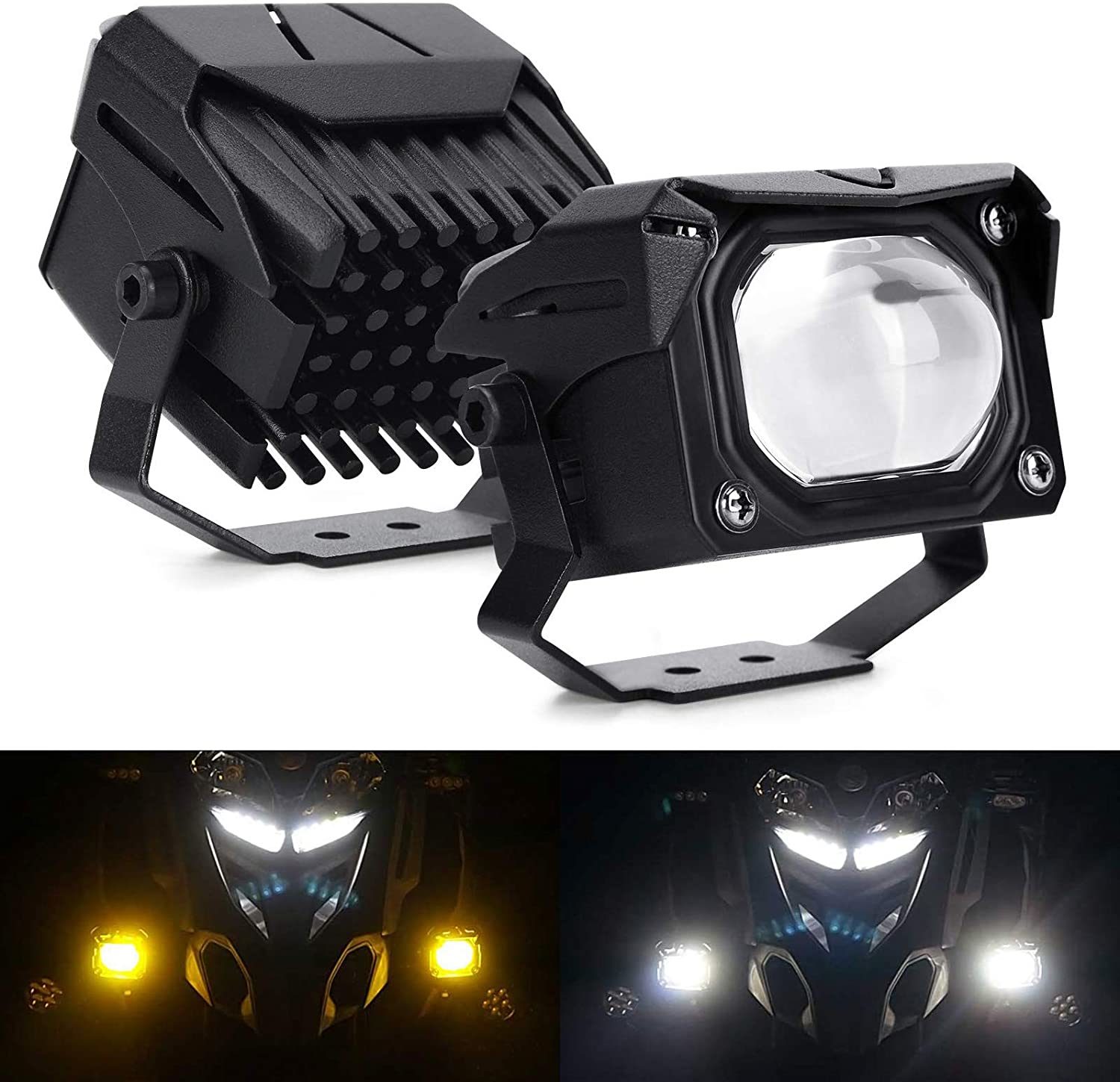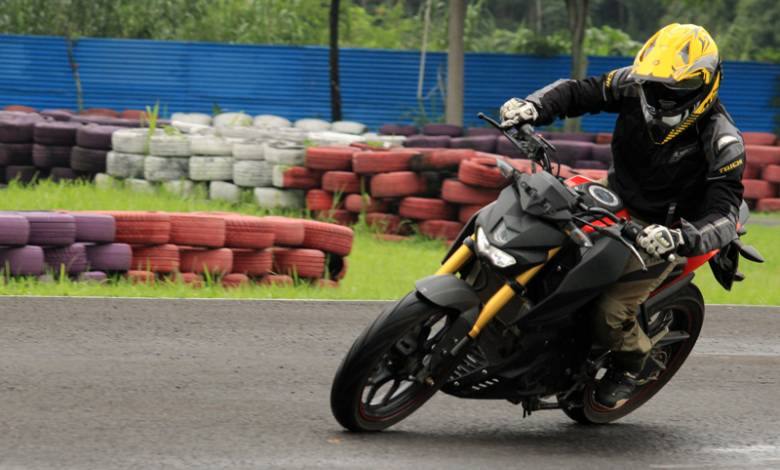Motorcycle Rearview Mirror Position and Its Importance

Some people believe that motorcyclists do not require mirrors due to their superior speed compared to other vehicles. In fact, in certain Southeast Asian countries, like Bangladesh, mirrors are required, but many riders don’t use them; instead, they wind them in, facing forward.
However, motorcycle rearview mirrors are indispensable for a rider’s safety gear. These mirrors offer critical information about the surrounding environment, allowing riders to make informed decisions and navigate the roads safely. Understanding the significance of properly positioning and placing these mirrors is paramount for every rider’s safety and awareness while on the road.
One of the most important aspects of motorcycling safety, regardless of size, is adjusting the side mirrors to the correct position. This involves more than just adjusting them to your personal preferences; it’s also about avoiding blind spots. The notion of adjusting the side mirrors is great, but riders can adjust them to their own convenience for maximum safety.
The ideal approach to looking in the mirror is to take a quick glimpse without moving your head. The actual physical adjustment of mirror arms differs according to mirror type. Let’s have a look at the measures you can take to ensure that the rearview mirror of your bike is positioned correctly.
Positioning Mirrors Within Handlebar Length
The strategic placement of rearview mirrors within the handlebar length is an essential factor for achieving maximum visibility. Placing the mirrors within this range allows riders to maintain stability in their field of view without having to move their heads or bodies excessively to check for blind spots. This positioning ensures that a fast, natural glance is all that is required to receive critical information while avoiding distractions and maintaining control of the motorcycle.
By keeping the rearview mirrors at the same length as the handlebars, the mirrors stay safe, and nothing uneven hits them. This means that even if you crash or fall, the mirrors might not break. It also shows how the rider really thought about the width of his or her motorbike and how much room it had for passing, running through, and dealing with tight traffic.
Positioning Mirrors in Fully Upright Mode
The proper alignment of motorcycle rearview mirrors in a perfectly upright position is critical. Ensuring that the mirrors are neither slanted nor inclined gives riders an accurate and undistorted reflection of the area behind them. A clear and unmodified perspective aids in spotting vehicles approaching from various angles and performing safer lane changes, lowering the chance of an accident.
Place Rearview Mirrors About Shoulder Height
For riders’ comfort and safety, it’s important that mirrors are placed at shoulder height. Putting mirrors at this height lets you take quick looks without having to change your stance a lot. Because of this clever setup, riders can see what’s going on around them and spend less time looking away from the road, which makes riding safer.
Position Mirrors to Cover At Least Two-Thirds of Rear View
Ensuring you have enough rearview coverage is important for lowering blind spots and making it easier to see everything. Making the mirrors cover at least two-thirds of the rearview area makes sure that a large area behind the motorbike is always visible. A biker can see clearly in every direction thanks to this. Therefore, it is crucial for a motorcyclist to precisely set their mirrors such that they can see two-thirds of the rear view with just one mirror. This all-around coverage lets motorcyclists know about oncoming cars, changing road conditions, and possible dangers, so they can act faster and stay safer while riding.
Position to cover 100% of the rearview with both mirrors
While separate mirrors provide specific fields of view, they must be properly adjusted to cover the entire rearview area. Aligning mirrors to match each other’s angles increases the overall visibility range, considerably reducing the likelihood of missing crucial information from any direction. This wide coverage provides a fuller picture of the surroundings, which contributes to increased safety.
Other Things to Consider
A biker should consider some other aspects regarding the rearview mirror of their bike-
Regular Inspection and Adjustment
Mirrors must be checked and adjusted on a regular basis. Mirrors can slowly become misaligned due to vibrations, rough roads, or small bumps, so they need to be checked often to make sure they are in the best position for maximum vision. Purchase a thick rubber washer or special vibration isolator and place it between the mirror mount and the mirror bar if your mirrors vibrate and all you can see is a blur.
Adaptation to Riding Conditions
Riders should consider adjusting mirror positions based on riding conditions. For instance, during heavy traffic, slightly altering mirror angles might help focus on immediate surroundings, while on open highways, wider coverage may be preferable.
Awareness of Vehicle Size and Position
Understanding how vehicle size and position affect mirror visibility is essential. Larger vehicles might obscure certain areas, emphasizing the need for more frequent and cautious checks of blind spots.
The Importance of Correct Rearview Mirror Positioning
The importance of accurately positioning motorcycle rearview mirrors extends to several crucial aspects of rider safety and awareness, like-
Enhanced Safety
Precisely adjusted mirrors significantly reduce blind spots, allowing riders to make informed decisions and react promptly to surrounding traffic, thereby minimizing the risk of accidents.
Improved Awareness
Clear rearview visibility empowers riders to anticipate potential hazards, such as approaching vehicles or sudden road condition changes, enabling proactive and safer riding.
Reduced Distractions
Properly positioned mirrors facilitate quick and effortless glances, preventing riders from becoming overly focused on checking blind spots and diverting attention from the road ahead, enhancing overall concentration.
Confidence and Comfort
Knowing that rearview mirrors offer comprehensive visibility instills confidence in riders, enabling them to feel more secure and comfortable while navigating diverse road conditions.
Legal Compliance
Correctly positioned mirrors often align with legal requirements, ensuring that riders adhere to traffic regulations and avoid potential citations or penalties.
Conclusion
Motorcycle rearview mirrors are more than mere accessories; they are indispensable safety aids for riders. Adhering to the principles of positioning mirrors within handlebar width, maintaining them upright, placing them at shoulder height, ensuring adequate coverage, and collectively covering the entire rearview significantly enhances visibility and safety on the road. These guidelines, when followed diligently, empower riders to navigate confidently, anticipate potential risks, and make informed decisions, contributing to a safer and more enjoyable riding experience.
Frequently Asked Questions
Why is it important to position motorcycle rearview mirrors within the handlebar length?
Placing mirrors within the handlebar length ensures a balanced field of vision, minimizing distractions and allowing quick, effortless glances for enhanced safety.
What is the significance of keeping motorcycle rearview mirrors in a completely upright mode?
Keeping mirrors upright avoids distortions, providing an accurate reflection. This contributes significantly to situational awareness and overall safety.
Why should rearview mirrors be placed near shoulder height?
Placing mirrors near shoulder height offers comfort and safety, enabling effortless glances without significant posture adjustments for a relaxed and safer riding experience.
What does it mean to cover at least 2/3 of the rearview, and why is it important?
Covering 2/3 of the rearview minimizes blind spots, allowing riders to anticipate risks like overtaking vehicles or sudden traffic changes, enhancing overall visibility and safety.
How does aligning both mirrors to cover 100% of the rearview enhance safety?
Aligning both mirrors for 100% coverage reduces the chance of missing crucial information, providing a complete understanding of the surroundings for safer navigation and decision-making.
Similar Advices

























 MEMBER
MEMBER 







